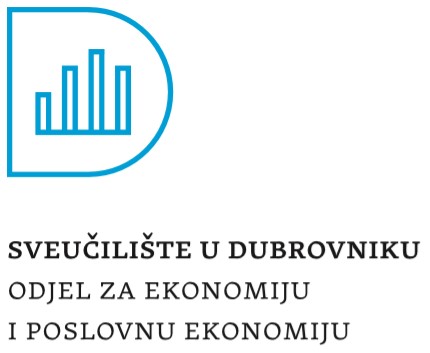Keywords
Brand, Brand Equity, Brand Identity, Brand Storytelling, Social Selling
Objectives/goals:
At the end of this module, you will be able to:
• Define brand, recognize its elements and outline brand purpose
• Explain the elements of brand equity
• Discuss the elements of brand identity
• Identify the successful way of brand differentiation
• Critically evaluate branded content and brand storytelling
• Distinguish among social media platforms that organizations use to attract customers
• Explain and discuss the elements of successful social media campaign
Description:
The first didactic unit entitled Building a Brand Strategy addresses some basic notions about a brand and its purpose, introduces the concept of brand equity, and outlines the topic of brand positioning. The second didactic unit entitled Building Brand Identity defines and provides good practice examples of brand identity, brand authenticity, brand differentiation and brand storytelling. The third didactic unit Social Selling defines the components and provides good practice examples of successful social media campaign.
Bibliography
What is a brand:
https://www.ignytebrands.com/what-is-a-brand/
Brand purpose:
https://brandmasteracademy.com/brand-purpose/#examples
How to choose branding elements to build brand equity:
https://brand-strategies-guide.blogspot.com/2013/11/how-to-choose-branding-elements-to.html
Brand personality:
https://awario.com/blog/brand-personality/
Kapferer, J.-N. (2004). The New Strategic Brand Management: Creating and Sustaining Brand Equity Long Term. London and Sterling: Kogan Page.
Keller, K. L., Parameswaran, A. M. G., Jacob, I. (2015). Strategic Brand Management: Building, Measuring, and Managing Brand Equity. Noida: Pearson.
Lamb, C. W., Hair, J. F., McDaniel, C. (2010). Essentials of Marketing. Mason: Cengage Learning.
Pride, W. M., Ferrell, O. C. (2015). Marketing 2016. Boston: Cengage Learning.
Brand identity:
Aaker D. A, Joachminsthaler E. (2000) Brand leadership. New York: Free Press.
Aaker D. A. (1996). Building strong brands. London: Simon & Schuster, Free Press.
Arnould, E. J., and Price, L. L. (2000). Authenticating acts and authoritative performances. Questing for self and community. In S. Ratneshwar, D. G. Mick, & C. Huffman (Eds.), The why of consumption. Contemporary perspectives on consumer motives, goals and desires (pp. 140–163). London: Routledge.
Berry, L. L. (2000). Cultivating service brand equity. Journal of the Academy of Marketing Science, 28(1), 128–137.
Beverland, M. B. (2005). Crafting brand authenticity: The case of luxury wines. Journal of Management Studies, 42(5), 1003–1029.
Da Silveira, C., Lages. C., & Simões. C. (2013). Reconceptualizing brand identity in a dynamic environment. Journal of Business Research, 66 (1), 28-36.
Ghodeswar, B. M. (2008). Building brand identity in competitive markets: a conceptual model. Journal of product & brand management, 17(1), 4-12.
Interbrand. (2007) Building a powerful and enduring brand: the past, present, and future of the ENERGY STAR® brand. Interbrand Publication for the U.S. Environmental Protection Agency; https://www.energystar.gov/ia/partners/downloads/energy_starbndmanf508.pdf
Kimpakorn, N., and Tocquer, G. (2010). Service brand equity and employee brand commitment. Journal of Services Marketing, 24(5), 378–388.
Kotler, P., and Keller, K. (2011). Marketing management. New York, NY: Prentice Hall.
Kuo, M. P., and Chen, Y. M. (2015). A study on the relationships among body sensory experience, customer satisfaction and customer loyalty-beauty SPA center as an example. International Journal of Business and Administrative Studies, 1(2), 61-67.
Branded content:
https://www.creativebloq.com/branding/7-great-examples-branded-content-61620674
Choi, M.W. (2015). A study on the branded content as marketing communication media in the viewpoint of relational perspective. Indian Journal of Science and Technology, 8, p.116.
Brand Storytelling:
Delgado-Ballester, E. and Fernández-Sabiote, E. (2016). “Once upon a brand”: Storytelling practices by Spanish brands. Spanish Journal of Marketing-ESIC, 20(2), 115-131.
Fog, K., Budtz, C., & Yakaboylu, B. (2005). Storytelling: Branding in practice. Berlin Heiddelberg: Springer-Verlag.
https://sujanpatel.com/marketing/7-companies-killing-brand-driven-storytelling/
Storytelling in start-up branding:
Thomassen, A. O., Jørgensen, K. M. and Klee, N. (2014). Strategic storytelling and Identity (re) configuration in a small start-up company. Critical narrative inquiry À Storytelling, sustainability and power in organizations. New York, NY: Nova Science Publishers.
Getting noticed on Facebook:
https://blog.hubspot.com/blog/tabid/6307/bid/28441/the-15-best-facebook-pages-you-ve-ever-seen.aspx
https://www.dreamgrow.com/22-inspiring-examples-of-facebook-page-designs/
Getting noticed on Twitter:
https://taggbox.com/blog/examples-of-successful-twitter-hashtag-campaigns/
https://sproutsocial.com/insights/twitter-campaign/
https://glean.info/some-of-the-best-twitter-campaigns-ever/
Getting noticed on Instagram:
https://business.instagram.com/success/
https://www.wordstream.com/blog/ws/2017/03/24/best-instagram-marketing-campaigns
https://neilpatel.com/blog/succeed-instagram-business/
Getting noticed on YouTube:
https://www.designwizard.com/blog/youtube-marketing-videos/
https://www.bigcommerce.com/blog/youtube-advertising/#benefits-of-advertising-on-youtube
Getting noticed on LinkedIn
Related training material

 Play Audio
Play Audio 















